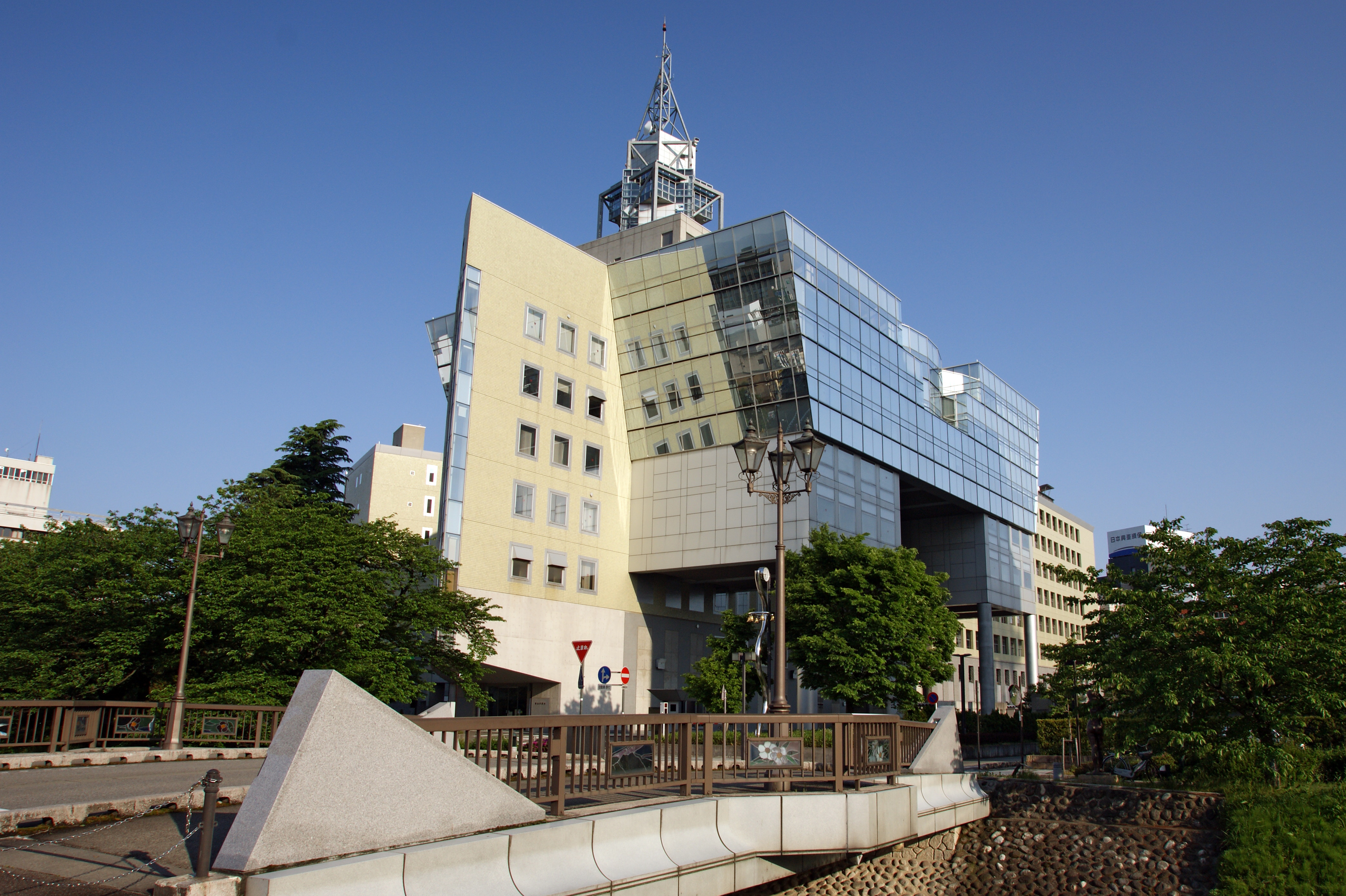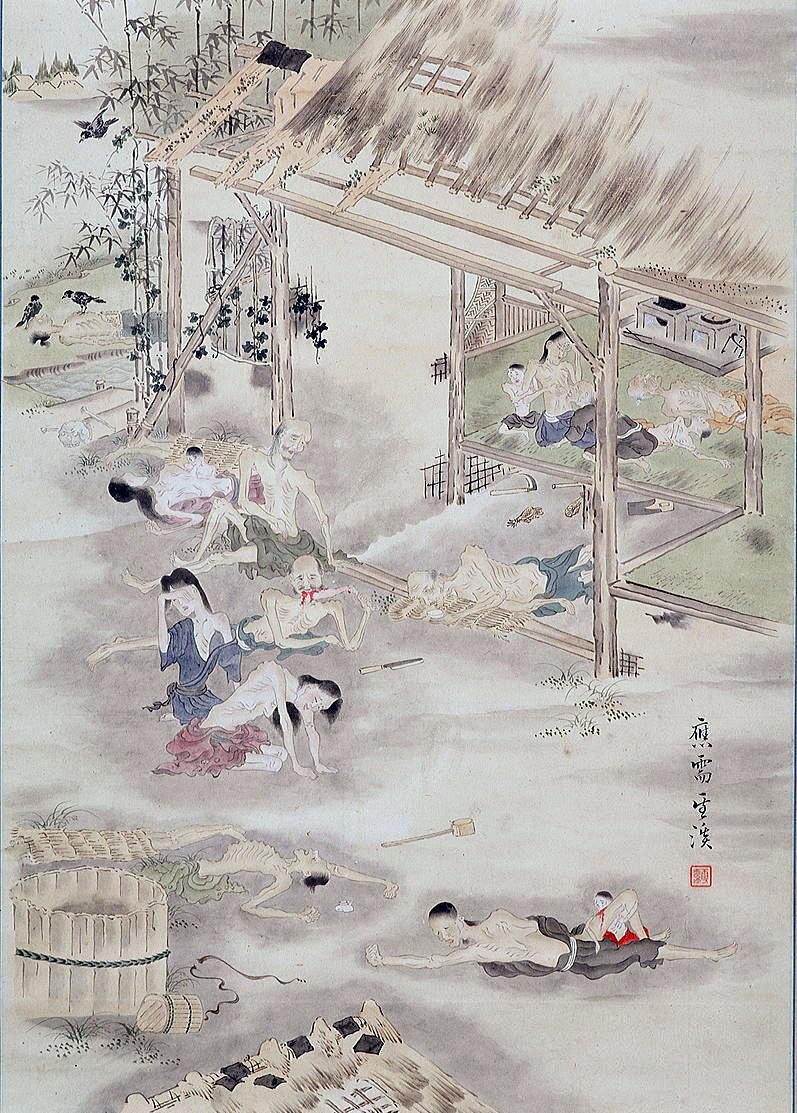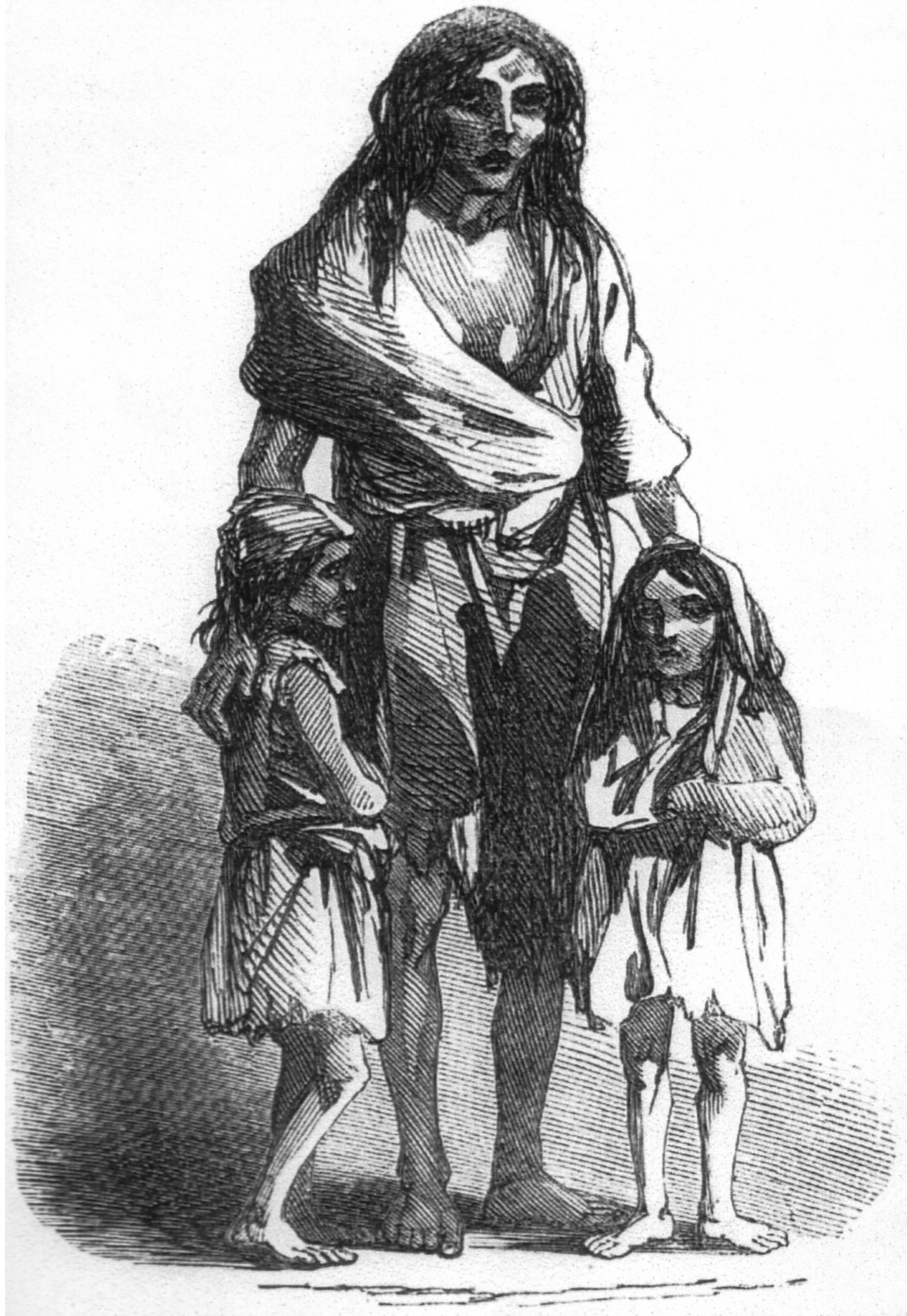|
Kanshō Famine
The Kanshō famine (長禄・寛正の飢饉, Chōroku-kanshō no kikin), was a famine which affected mostly western Japan from 1459 to 1461 (or Chōroku-3 to Kanshō-2, in the Japanese calendar.), during the reign of Emperor Go-Hanazono in the Muromachi period. The ruling shōgun during the famine was Ashikaga Yoshimasa. The number of deaths from starvation was at least 82,000. Causes The ongoing conflict in the Kantō region following Kyōtoku Incident in 1454, plus general incompetence in the administration of Ashikaga Yoshimasa leading up to the Ōnin War contributed to poor agricultural production and a sluggish response to the famine, greatly increasing its death toll. Famine A general drought in Japan began in March 1459. It ended in September 1459 with a severe typhoon, flooding the Kamo River and causing major damage. Rare astronomical phenomena were reported, including sun dogs and a meteor colliding with the moon, possibly connected to the Little Ice Age. Taking an oppo ... [...More Info...] [...Related Items...] OR: [Wikipedia] [Google] [Baidu] |
Chōroku
was a after ''Kōshō'' and before ''Kanshō.'' This period spanned the years from September 1457 through December 1460. The reigning emperor was . Change of era * 1457 : The era name was changed to mark an event or a number of events. The old era ended and a new one commenced in ''Kōshō'' 3. Events of the ''Chōroku'' era * 1457 (''Chōroku 1): Tarō Sayemon attempted to retrieve the Sacred Jewel for Emperor Go-Hanazono; and he actually did manage to gain possession of it for a brief time. A counterattack prevented the success of this dangerous mission in Yoshino. In 1443 (''Kakitsu 3, 23rd day of the 9th month''), an armed group of rebels penetrated the palace defenses. A fire was started and one of the men sought to kill Emperor Go-Hanazono, but the emperor escaped. However, the intruders managed to steal the Sacred Treasures – the mirror, the sword and the jewel. Later, a guard found the mirror and a priest found the sword, but the location of jewel was not known un ... [...More Info...] [...Related Items...] OR: [Wikipedia] [Google] [Baidu] |
Toyama, Toyama
is the capital city of Toyama Prefecture, Japan, located on the coast of the Sea of Japan in the Chūbu region on central Honshū, about north of the city of Nagoya and northwest of Tokyo. , the city had an estimated population of 415,844 in 176,643 households, and a population density of 335 persons per km2. Its total area was . Overview The city has been designated an environmental model city by the national government for its efforts to reduce the emission of greenhouse gases. Cityscapes File:Toyama Castle (4207284334).jpg, Toyama Castle(2009) File:Anyobo, Toyama, Toyama Prefecture 930-0881, Japan - panoramio (35).jpg, Skyline of Toyama City(2015) File:View from Toyama City Hall, north side.jpg, CBD of Toyama(2018) File:Sogawa st.jpeg, Downtown Sōgawa(2016) File:Fugan unga.JPG, Toyama Kansui park(2016) Geography Located in the middle of its prefecture, Toyama is a seaside city by the coast of the Sea of Japan. Its municipal territory borders with ... [...More Info...] [...Related Items...] OR: [Wikipedia] [Google] [Baidu] |
Great Tenmei Famine
The Great Tenmei famine (天明の大飢饉, ''Tenmei no daikikin'') was a famine which affected Japan during the Edo period. It is considered to have begun in 1782, and lasted until 1788. It was named after the Tenmei era (1781–1789), during the reign of Emperor Kōkaku. The ruling ''shoguns'' during the famine were Tokugawa Ieharu and Tokugawa Ienari. The famine was the deadliest one during the early modern period in Japan. Causes The 1783 eruption of Mount Asama is said to have caused the Great Tenmei famine. Starting in the 1770s, there was a sharp decline in crop yield in Tōhoku, which is the north-eastern region of Honshū, due to poor and cold weather, so food stocks in rural areas were exhausted. The situation was exacerbated by natural disasters: Mount Iwaki erupted on April 13, 1783 (3rd month, 12th day, in the year Tenmei-3, according to the Japanese calendar), as did Mount Asama on July 6, so volcanic ash was sent down into the atmosphere of Japan. Aside from th ... [...More Info...] [...Related Items...] OR: [Wikipedia] [Google] [Baidu] |
Kyōhō Famine
The Kyōhō famine (享保の大飢饉, Kyōhō no daikikin), was a famine on the Japanese island of Kyushu during the reign of Emperor Nakamikado in the Edo period. It is estimated that 12,172-169,000 people died from starvation. The famine, named after the Kyōhō era (1716–1736), is considered to have begun in 1732 and lasted until 1733. The ruling shōgun during the famine was Tokugawa Yoshimune. Precursor The cause of the famine is not known. The Kyōhō Reforms ruling in 1728 increased taxes from 40% to 50% may have reduced agricultural productivity and food stocks. The 1730 ruling, introducing obligatory rice buying quotas for Han estate owners and wealthy merchants, turned rice into a cash crop and reduced diversity of Japanese crops. The scarcity of sesame oil and whale oil for treating seeds may have contributed to the severity of the later insect infestation. Famine Starting in December 1731 heavy rains damaged the winter cereal crops (wheat and barley) and communi ... [...More Info...] [...Related Items...] OR: [Wikipedia] [Google] [Baidu] |
Kan'ei Great Famine
The Kan'ei Great Famine ( ') was a famine which affected Japan during the reign of Empress Meishō in the Edo period. The estimated number of deaths due to starvation is between 50,000 and 100,000. The famine is generally considered to have begun in 1640 and lasted into 1643. It was named after the Kan'ei era (1624–1644). The ruling ''shōgun'' during the famine was Tokugawa Iemitsu. Events leading to the famine Due to large numbers of internally displaced persons in the aftermath of the Shimabara Rebellion, and the rinderpest epizooty, which broke out in Kyushu in 1638 and was impossible to contain, led to mass deaths of cattle in Western Japan, which reduced agricultural productivity in 1640 due to the scarcity of working animals. Also, motivation among farmers was weakening due to the extreme impoverishment of low-ranking samurai class members. The increased spending after the 1635 reformation of Sankin-kōtai (increasing frequency of ''daimyō'' annual trips to Edo) did not ... [...More Info...] [...Related Items...] OR: [Wikipedia] [Google] [Baidu] |
List Of Famines
This is a list of famines. List See also Main article lists * Bengal famine * Droughts and famines in Russia and the Soviet Union * Famine in India * Famines in Czechia * Famines in Ethiopia * Great Bengal famine of 1770 * Great Famine of 1876–1878 * Great Chinese Famine * Holodomor * Khmer Rouge * List of famines in China * North Korean famine * Timeline of major famines in India during British rule Other articles * 2007–2008 world food price crisis * Disaster * Famine Early Warning Systems Network * Famine events * Famine relief * Famine scales * Food security * List of natural disasters by death toll * List of wars and anthropogenic disasters by death toll * Live Aid * Medieval demography * Population decline * Potato famine * Starvation * Theories of famines * World population References Bibliography * * * * External links {{Disasters * Famines Famines Famine A famine is a widespread scarcity of food, caused by several factors ... [...More Info...] [...Related Items...] OR: [Wikipedia] [Google] [Baidu] |
Hongan-ji
, also archaically romanized as Hongwanji, is the collective name of the largest school of Jōdo Shinshū Buddhism (which further sub-divides into the Nishi and Higashi branches). 'Hongan-ji' may also refer to any one of several actual temple buildings associated with the sect. Early history The Hongan-ji was established as a temple in 1321, on the site of the Ōtani Mausoleum, where Shinran, the founder of the Jōdo Shinshū ("True Pure Land") was buried. The mausoleum was attended by Shinran's grandson (through daughter Kakushinni), Kakue. Kakue's own son, Kakunyo, became the first chief priest of the Hongan-ji and third monshu (spiritual leader), and dedicated it to the worship of Amitābha (''Amida''). The Hongan-ji first gained power and importance in the 15th century, when Rennyo became its eighth monshu. However, the Tendai sect based on Mount Hiei saw this expansion as a threat and attacked the Hongan-ji three times with its army of sōhei. Rennyo fled to Yoshizaki-gobō ... [...More Info...] [...Related Items...] OR: [Wikipedia] [Google] [Baidu] |
Rennyo
Rennyo (, 1415–1499) was the 8th Monshu (head priest) of the Hongan-ji Temple of the Jōdo Shinshū sect of Buddhism, and descendant of founder Shinran. Jodo Shinshu Buddhists often referred to as the restorer of the sect ( in Japanese). He was also known as ''Shinshō-in'' (信証院), and posthumously ''Etō Daishi'' (慧灯大師). During the conflict of the Ōnin War and the subsequent warfare that spread throughout Japan, Rennyo was able to unite most of the disparate factions of the Jodo Shinshu sect under the Hongan-ji, reform existing liturgy and practices, and broaden support among different classes of society. Through Rennyo's efforts, Jodo Shinshu grew to become the largest, most influential Buddhist sect in Japan. Rennyo is venerated along with Shinran, and liturgical reforms he implemented are still in use today in Jodo Shinshu temples. Further, Rennyo's letters were compiled and are still recited in Jodo Shinshu liturgy. Rennyo maintained a complex relationsh ... [...More Info...] [...Related Items...] OR: [Wikipedia] [Google] [Baidu] |
Enryaku-ji
is a Tendai monastery located on Mount Hiei in Ōtsu, overlooking Kyoto. It was first founded in 788 during the early Heian period (794–1185) by Saichō was a Japanese Buddhist monk credited with founding the Tendai school of Buddhism based on the Chinese Tiantai school he was exposed to during his trip to Tang China beginning in 804. He founded the temple and headquarters of Tendai at Enryaku-j ... (767–822), also known as Dengyō Daishi, who introduced the Tendai sect of Mahayana Buddhism to Japan from China. The temple complex has undergone several reconstruction efforts since then, with the most significant (that of the main hall) taking place in 1642 under Tokugawa Iemitsu. Enryaku-ji is the headquarters of the Tendai sect and one of the most significant monasteries in Japanese history. As such, it is part of the UNESCO World Heritage Site "Historic Monuments of Ancient Kyoto (Kyoto, Uji and Otsu Cities)". The founders of Jōdo-shū, Jōdo Shinshū, Sōtō, Sōt� ... [...More Info...] [...Related Items...] OR: [Wikipedia] [Google] [Baidu] |
Rokkaku-dō
The , official name , is a Buddhist temple in Kyoto, Japan, said to have been established by Prince Shōtoku. The name comes from its main hall's hexagonal shape. This temple is part of the Saigoku Kannon Pilgrimage. History Rokkaku-dō is believed to have been established in the early Heian period. The origins of traditional Japanese flower arrangement through the ''Ikenobō'' school are linked to Rokkaku-dō in the medieval Muromachi period. Rokkaku-dō was instrumental in the development of Jōdo Shinshū. In 1201 CE, Shinran undertook a 100-day retreat ... [...More Info...] [...Related Items...] OR: [Wikipedia] [Google] [Baidu] |
Millet
Millets () are a highly varied group of small-seeded grasses, widely grown around the world as cereal crops or grains for fodder and human food. Most species generally referred to as millets belong to the tribe Paniceae, but some millets also belong to various other taxa. Millets are important crops in the semiarid tropics of Asia and Africa (especially in India, Mali, Nigeria, and Niger), with 97% of millet production in developing countries. This crop is favored due to its productivity and short growing season under dry, high-temperature conditions. Millets are indigenous to many parts of the world. The most widely grown millets are sorghum and pearl millets, which are important crops in India and parts of Africa. Finger millet, proso millet, and foxtail millet are also important crop species. Millets may have been consumed by humans for about 7,000 years and potentially had "a pivotal role in the rise of multi-crop agriculture and settled farming societies." Descript ... [...More Info...] [...Related Items...] OR: [Wikipedia] [Google] [Baidu] |






